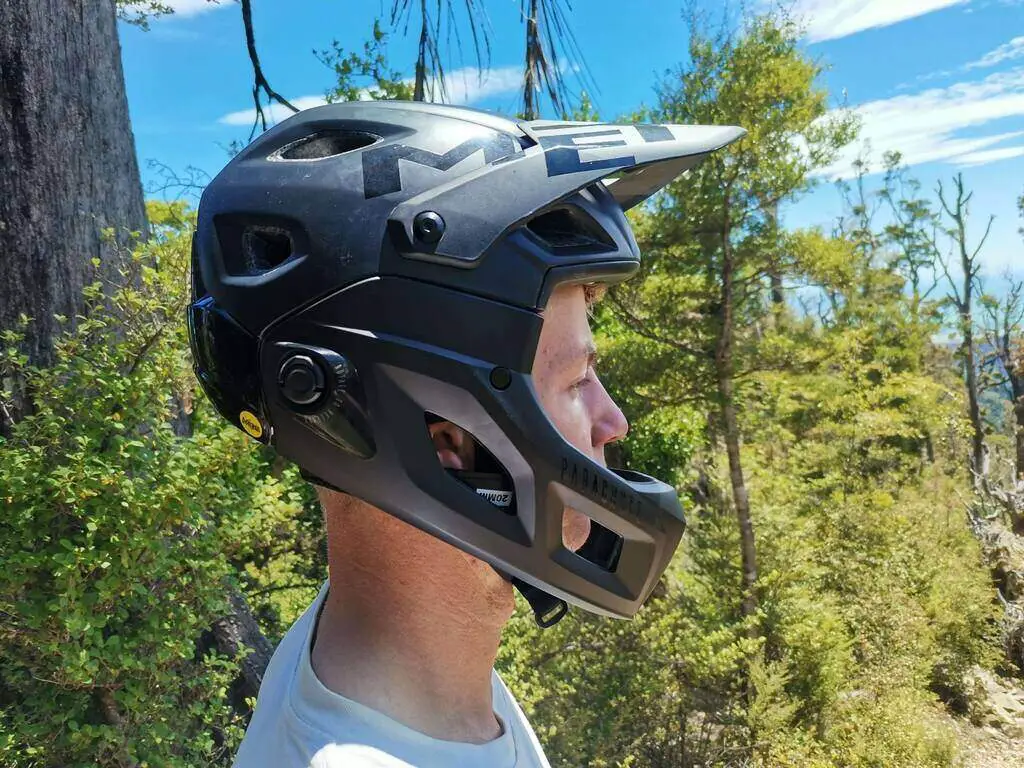We tested the Met Parachute MCR vs Bell Super Air R for an in-depth comparison between two of the best convertible lids on the market.
If you are in the market for a new helmet, you can’t go wrong with a convertible helmet. After buying one, I certainly won’t be going back! If you aren’t yet convinced on the convertible helmet idea, check out our post here.
And if you aren’t sure what a convertible lid is- it is a full face helmet with a removable chin bar. Once the chin bar is removed, the helmet is essentially a standard half shell helmet, and saved the need for buying two separate helmets and encourages riders to use a full face more often!
The Met Parachute MCR and the Bell Super Air R are two premium quality helmets, which are constructed to be user-friendly, comfortable and lightweight. We will delve into the details a bit further down, so you can decide which helmet is going to suit you and your riding better.
MET Parachute MCR Review
The stylish yet practical Parachute MCR is one of those products that has a bit of a cult following in the mountain bike world. It is a good solid, high-quality product that offers high levels of protection without sacrificing style, comfort and ventilation.
MCR stands for the Magnetic Chin-Bar Release, which is a pretty efficient chin bar connection system, unique to the MET Parachute.
The MET Parachute MCR is aimed at trail to enduro riders, who appreciate the freedom of riding without a chin bar on the way up, but need the protection on the gnarly sections of trail on the descent. See our full review here.
Pros
- MIPS
- Downhill Certified
- Comfortable
Cons
- The half-shell could be lighter
- Visor doesn’t go very low
- Squeeze to get on and off as a full-face
Bell Super Air R Review
The Bell Super Air R has made a strong case for a lightweight, comfortable helmet. When wearing it as a full face, it is so light, so unrestrictive and well ventilated that you barely notice the chin guard is there.
Super light, super comfortable helmet proving a little extra protection when it is needed.
As a half shell, it is competitive with the top of the line helmets in terms of safety, weight, and other features. The chin bar is pretty simple to clip on, and feels pretty sturdy once attached.
It is key to note that the Bell Super Air R is not downhill certified. This means it cannot withstand as much energy from an impact that a downhill certified helmet can. This is explained a bit more in the safety section below. The helmet is aimed at riders who want the option to have a bit more security than a half shell. See our full review here.
Pros
- MIPS Spherical
- Light
- Very well ventilated
Cons
- Doesn’t feel as secure as a downhill certified lid does
Met Parachute MCR vs Bell Super Air R
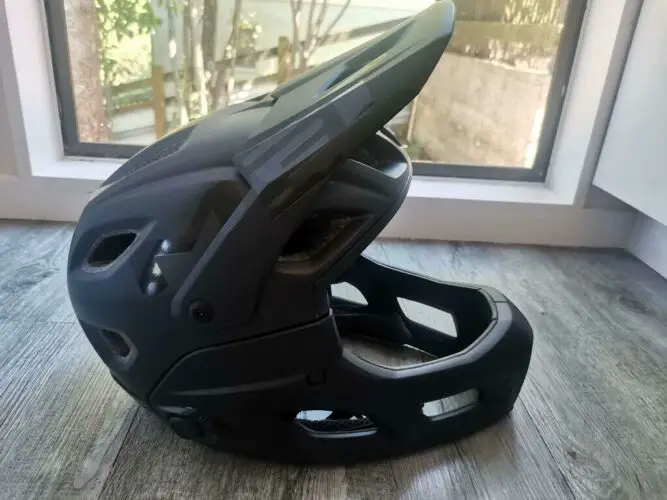
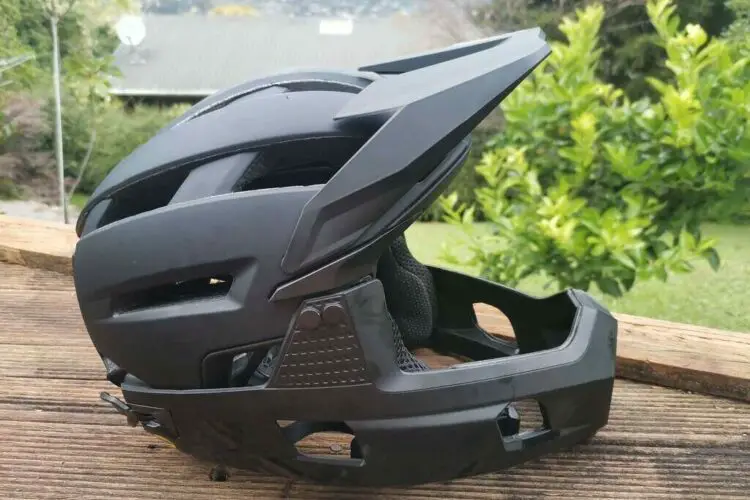
Design Comparison
The general gist of the helmets are pretty similar- detachable chin bar below the ears and behind the head, adjustable visor, and plenty of vents. However, the looks are drastically different. The Super Air R has gone for large, angular looking vents. The angles on the helmet are more defined, giving it an overall sharper look.
The Parachute MCR is a bit softer on the eyes, with rounded vents, a curved chin bar and visor. The MET team clearly put a lot of thought into the interface between the chin bar and helmet as the chin bar attachment also looks a lot less clunky and obvious. I also really like the finish of the MCR, which looks rather professional.
Construction Comparison
The Super Air R has an in-mold polycarbonate construction, allowing the external shell to be molded as one to the inner EPS layer.
Starting from the outside, both helmets are fully wrapped in a polycarbonate shell. This keeps the inner layer of foam protected from the elements, and extend the durability of the lid.
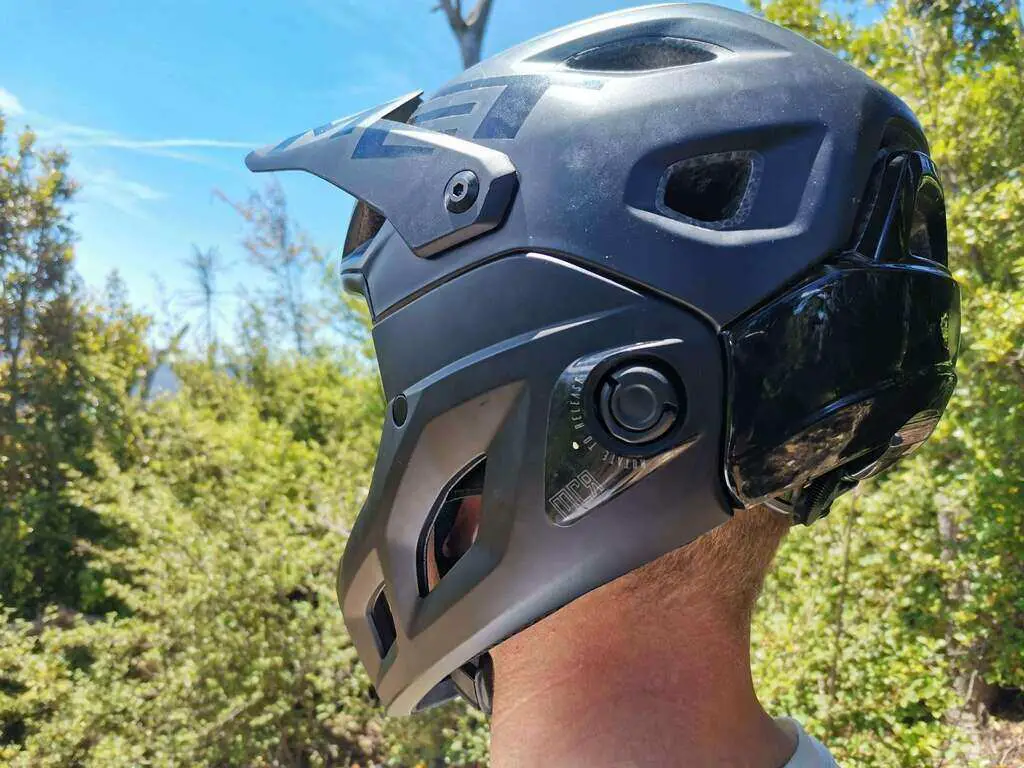
Inside the shell is the foam which acts as ‘crumple zone’ in a crash, absorbing the impact so the energy isn’t transferred to your head. The MET Parachute MCR has a single layer of EPS foam, while the Bell Super Air R has two layers of foam here. In the Super Air R, one layer absorbs energy from slower crashes, and the other from harder, faster crashes. This is worked in with the MIPS Spherical, which will be explained below in the safety section.
Inside the foam is the cushioning layer that comes in contact with your head. The Super Air R has gone for minimalist padding, with barely any around the cheeks (which as a rounder faced person, I quite like). The MET Parachute MCR has gone the other way, with plush pads right around the helmet. It feels secure around the head, which is very reassuring!
The chin bar is quite different between the two helmets. The MET Parachute MCR chin bar is a fair bit more solid than the Super Air R. Whereas the chin bar of the Super Air R is lighter and feels a bit more flimsy. Both sit well out of the way of your peripheral vision, and if you tip them down slightly, it is easy enough to have a sip of water.
Safety Comparison
The main difference between the helmets is that the Parachute MCR has achieved the ‘Downhill Certification’ (ASTM-1952), while the Bell Super Air R has NOT. This means the MET Parachute MCR is rated to withstand higher energy impacts than the Super Air R. For more on testing and helmet safety standards, see here.
This certification essentially identifies the helmets that are designed for high-speed, gnarly crashes- such as for Downhill or Enduro riders and racers. It means that the helmet has a bit more bulk and strength to it.
It is important to keep in mind that not every rider actually needs a downhill-certified helmet however. And it is key to note that the Super Air R will still provide significantly more protection for your face than a half shell.
The Bell Super Air R is still an exceptionally ‘safe’ helmet, with MIPS Spherical and the chin bar for when you need it. The MIPS Spherical is a great invention, which allows the outer shell to rotate relative to the inner shell. This means less rotational energy is transferred to the riders heads. There are two separate layers of foam (EPP and EPS foam), of which both absorb different levels of energy from higher and lower speed crashes.
While Parachute MCR does not have the fancy MIPS spherical, it does still have your standard MIPS liner. This will work to reduce rotational impacts if you do come off and hit the ground hard.
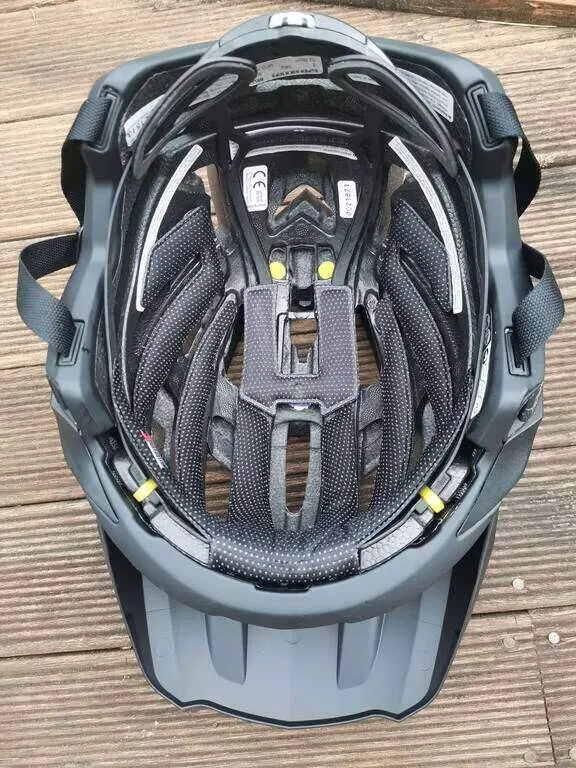

Ventilation Comparison
Of the two helmets, the Super Air R has superior ventilation. It is lighter, larger vents and the MIPS Spherical helps circulate the air through the helmet faster.
Both helmets have overbrow ventilation which are vents that allow air in beneath the visor and circulate through the helmet.
Vents on both chin guards are reasonably sized, and allow for plenty of airflow while descending. And in all honesty, I don’t find climbing in the Super Air R as a full face all that difficult either (although I can hear myself puffing a little louder!).
Weight Comparison
The Bell Super Air R is an exceptionally lightweight helmet, weighing in at 640 g with the chin bar, for a size medium.
The Met Parachute MCR weighs a bit more at 840 g including the chin bar, for a size medium.
For comparison, the Bell Super DH (another downhill certified convertible helmet) weighs 850 g, the Fox Rampage full face around 1000 g, and a very lightweight half shell helmet (such as the Specialised Ambush) weights around 400 g.
So the Bell Super Air R is phenomenally lightweight, while the Met Parachute MCR is very reasonable for a downhill certified full face helmet.
Comfort and Fit Comparison
While comfort is very much up to personal preference, both companies have done their bit in ensuring the helmets will be as comfortable for as many people as possible!
Bell has the ‘Float Fit’ system, which adjusts in super small increments around the head, giving the rider a perfect fit. It isn’t too different from the Boa retention system that MET has used.
Both helmets come with additional padding in the box so you can switch out pads until it fits around the face comfortably. One of the reasons I loved the Super Air R immediately was because the padding wasn’t pushing against my cheeks, which makes it better ventilated and feel a bit freer from the chin guard! But if you prefer that more secure fit, you could swap in the beefier chin pads.
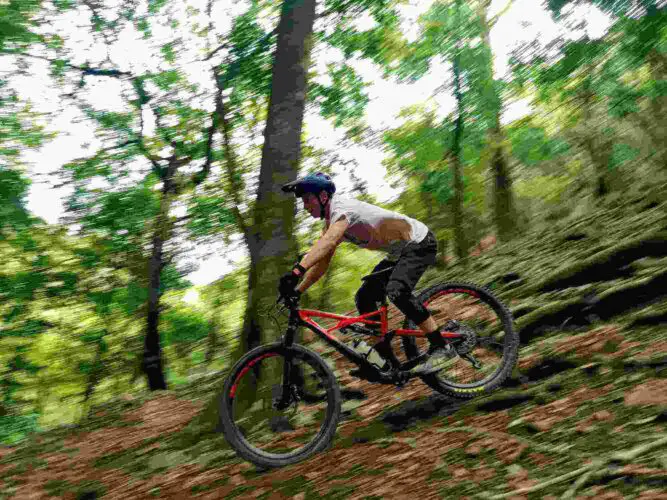
The helmets are sized pretty similarly, and both come in Small, Medium and Large. I’d say that neither run larger or smaller than usual, but we’d always recommend trying on a helmet before you buy if you can.
The helmets both have vertical adjustment, allowing you to sit the helmet on your head how you would like it!
Features Comparison
Both helmets have adjustable visors, allowing you to store eyewear at underneath the visor. The Super Air R even has a section at the rear of the helmet that helps goggle straps from moving around.
While Bell has mastered the length of the visor to not look too short as a full face helmet and not too long as a half shell, Met hasn’t quite. Looking at the Parachute MCR as a half shell, the visor is certainly longer than you’d normally expect. It also doesn’t have a low positioning- just high and higher- which adds to the odd visor look.
Summary of the features are below:
Bell Super Air R
- MIPS Spherical
- Sweat Guide
- Integrated Helmet Mount (for lights or GoPro)
- X-Static Padding (stops the helmet smelling)
- Goggle grips
- Extra set of cheek pads
- 3 position visor
- 22 vents and internal channeling
MET Parachute MCR
- MIPS
- DH Certification
- MCR Attachment System
- BOA retention system
- Extra set of cheek pads
- Flexible and 2-position visor
- Fidlock Magentic buckle
- 21 Air vents and internal channeling
Final Thoughts
The two helmets are at the top of their game in terms of performance, comfort and features. But the helmets have two different intended users- those wanting full downhill protection, and those wanting a middle ground between a half shell and a full downhill lid.
When it comes to choosing between the two, you as the rider will need to determine whether or not you need the extra bulk and safety that comes with the downhill certification. The MET Parachute offers an incredible design that is safe, but slightly heavier, less ventilated and a bit pricier.
If you are a bit more of a casual rider, who just wants a step up safety wise from a standard half shell helmet, you cannot go wrong with the Bell Super Air R. But if you are racing enduro’s, or pretty sendy at the bike park, the MET Parachute is going to suit you better.

For more reviews and comparisons similar to this MET Parachute MCR vs Bell Super Air R comparison, check out the following posts.
